Archive
Storage and Seeds
While the warm season harvest may be over, there is lots of work pertaining to the warm season left to do. One of the biggest challenges is organizing all of the food that was packed away. The canned items should be stored in a way that allows the cans to be inspected from time to time. A few cans will not properly seal, and if left to sit unsealed they are capable of making a real mess. You can tell the cans are no longer sealed when the center portion of the lid pops to the up position, as opposed to the downward position created by an internal vacuum. When the lids pop up, the contents should be discarded either in a compost pile or in the garbage. Out of over 100 jars of canned tomatoes only three have become unsealed.
The harvest may be over but it’s now time to collect seeds for future planting. I’ve found that the hot greenhouse makes harvesting and storing dry beans pretty easy. I start by collecting the bean pods and spreading them out on my tables in the greenhouse. The sun will then dry out the outer husk making the process of removing beans fairly easy, simply apply pressure to the outer husk and watch the pod crack along the seems. The dry beans inside can then be stored in a glass jar for planting next spring.
Lettuce seeds are also pretty easy to collect if they are allowed to dry in the sun. The plants will grow to about three feet in height, and will grow tiny seed pods after setting small flowers. I’ve been experimenting with the quickest way to harvest the seeds, but for now the best advice I can give is to collect each pod individually, and press the pods between your fingers to release the seeds within. You will then need to separate the seeds from the pods, or simply plant the pods with the seeds in the spring.
It’s nearly time to collect Pak Choi seeds as well. I didn’t get a large enough harvest to cook with this Asian vegetable, but I did try it raw, and it wasn’t bad, so I plan to save lots of seeds for next year. The plants seemed to put all of their effort into seed pods, so I may have planted them late in the season, but there will be plenty of seeds for next year.
Before collecting the seeds, wait till the pods turn a brownish color, and crack open easily. A few of the pods have already turned brown, but the majority are not yet mature.
You may also like:
I’ve Become a Tomato
I knew I was growing a lot of tomato plants when I was planting seeds this spring, and I realized that I would probably get a lot of tomatoes no mater what happened, but I didn’t imagine what would be done with them all. I figured that if I grew lots of tomatoes, everyone on the farm would find lots of uses for them, and we have. Lately everyone has been working on one task more then most others: Canning Tomatoes. The process begins by sterilizing the jars which will contain the veggies.
The tomatoes need to be washed off, rinsed, dried and finally diced into smaller chunks. The amount shown above will fill about seven large jars.
Before putting the lid on the jars, we added a small amount of “Fruit Fresh”, and added water until it was within one inch of the lid. The right amount of water is important for the jar to seal.
After placing the lids on the jars it’s time for a good half of an hour bath in boiling water. Be careful not to get burnt by the hot water.
Each batch yields about seven jars, so you can imagine that we have been canning quite often. All of the tomatoes shown have come from one of three gardens including my sisters, my mothers and my own garden.
We even tried out some yellow tomatoes after hearing that any color tomato is safe to can.
After helping with two batches of cans on Sunday, I figured I would go pick some more tomatoes. I have been trying to pick the tomatoes every four or five days, which gives the green tomatoes some time to start ripening. For now, I’ll pick any tomato that’s not green.
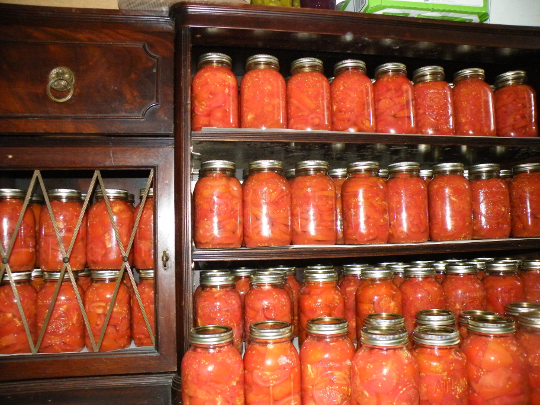
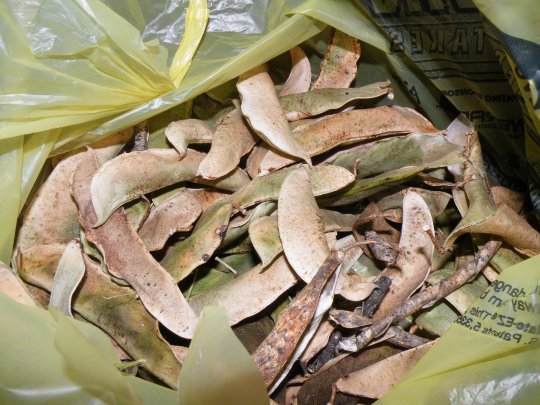
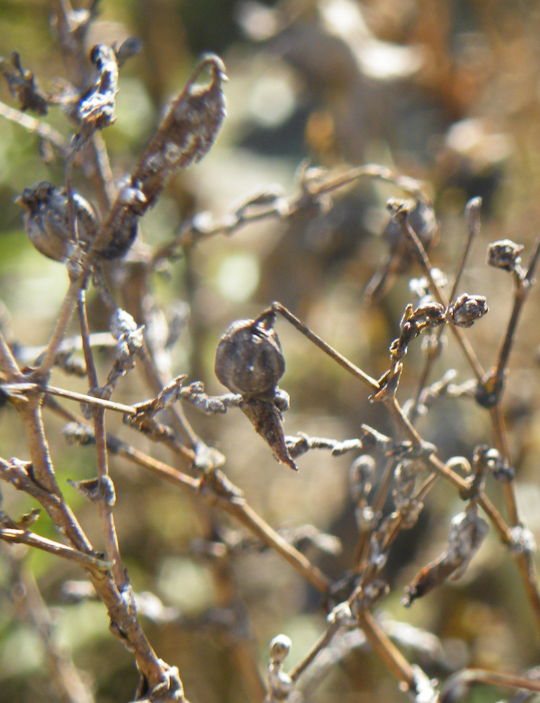
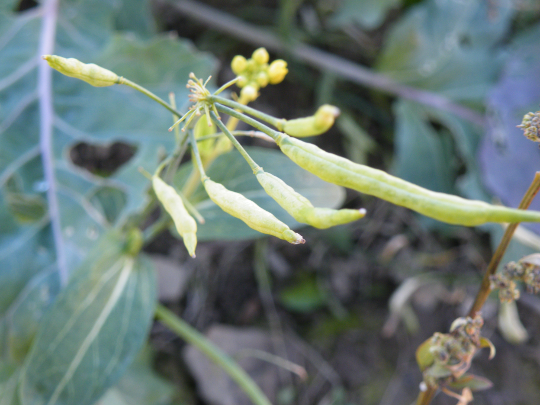
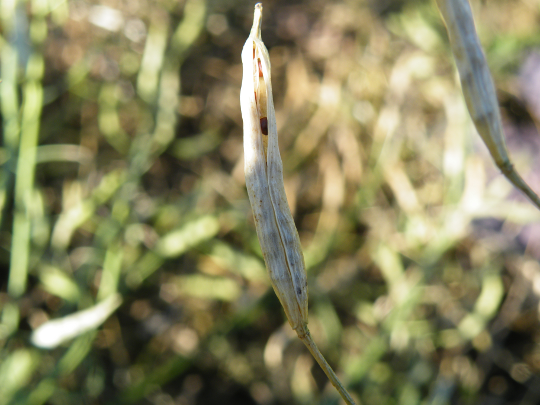
 Life Beyond Tomatoes
Life Beyond Tomatoes Checking on the Tomato Patch
Checking on the Tomato Patch A Three Bean Story
A Three Bean Story August 4th Harvest
August 4th Harvest I’ve Become a Tomato
I’ve Become a Tomato Next Year’s Garden ’12
Next Year’s Garden ’12 Greenhouse Tomatoes
Greenhouse Tomatoes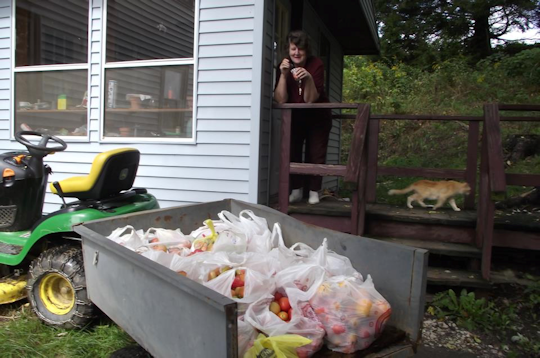
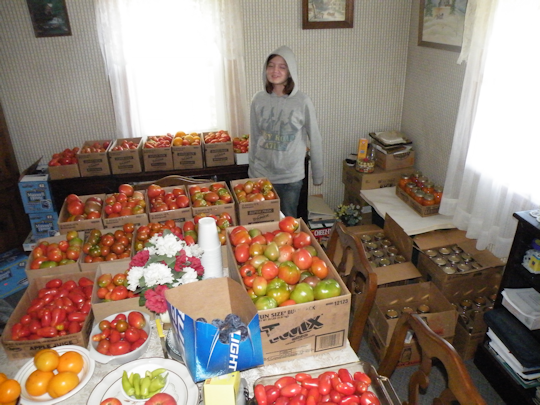


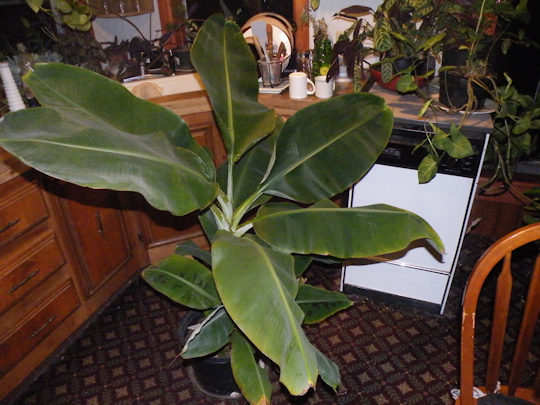

 Tis the Season for Picking
Tis the Season for Picking Tomatoes, Tomatoes, Tomatoes…
Tomatoes, Tomatoes, Tomatoes… Photos From the Tomato Patch.
Photos From the Tomato Patch. A bittersweet harvest
A bittersweet harvest 2011 Tomatoes
2011 Tomatoes Tomatoes
Tomatoes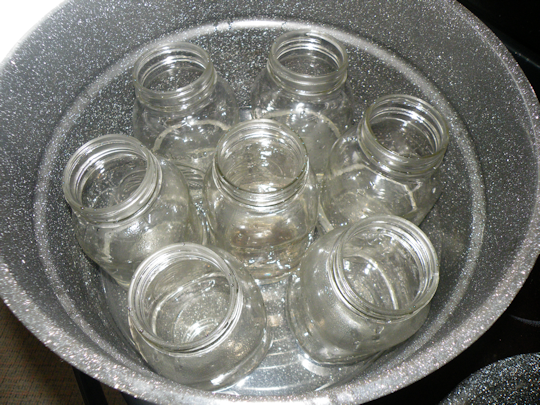
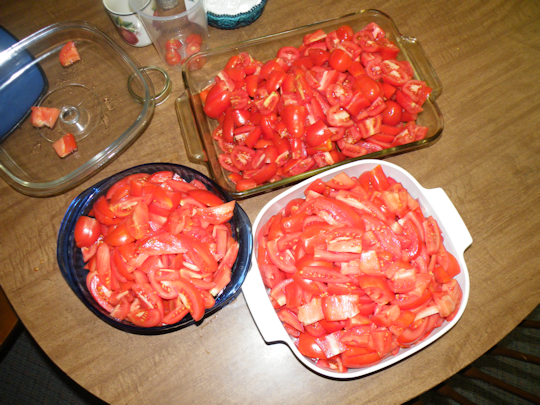
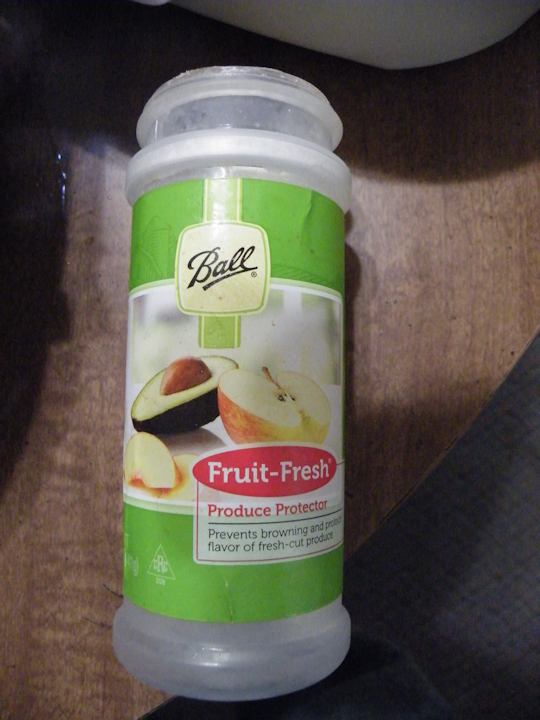
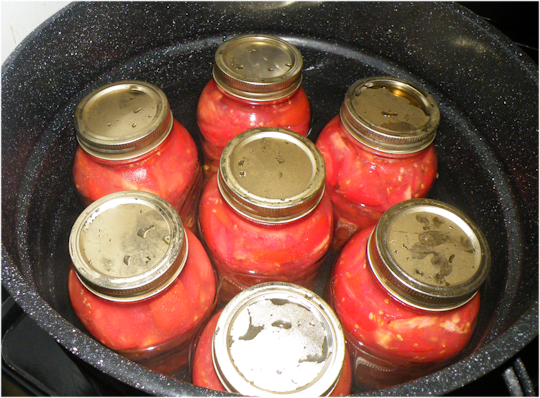

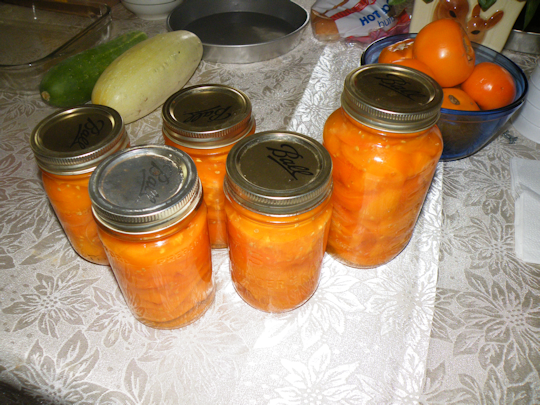
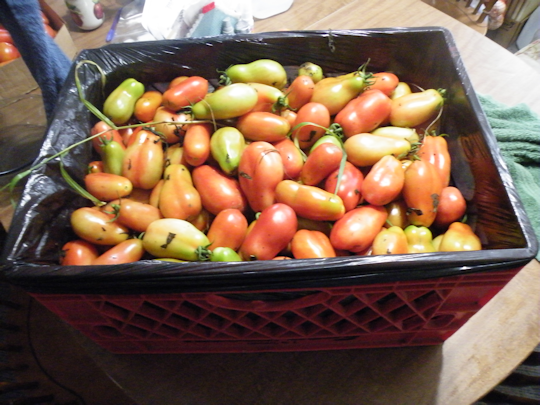









Comments: